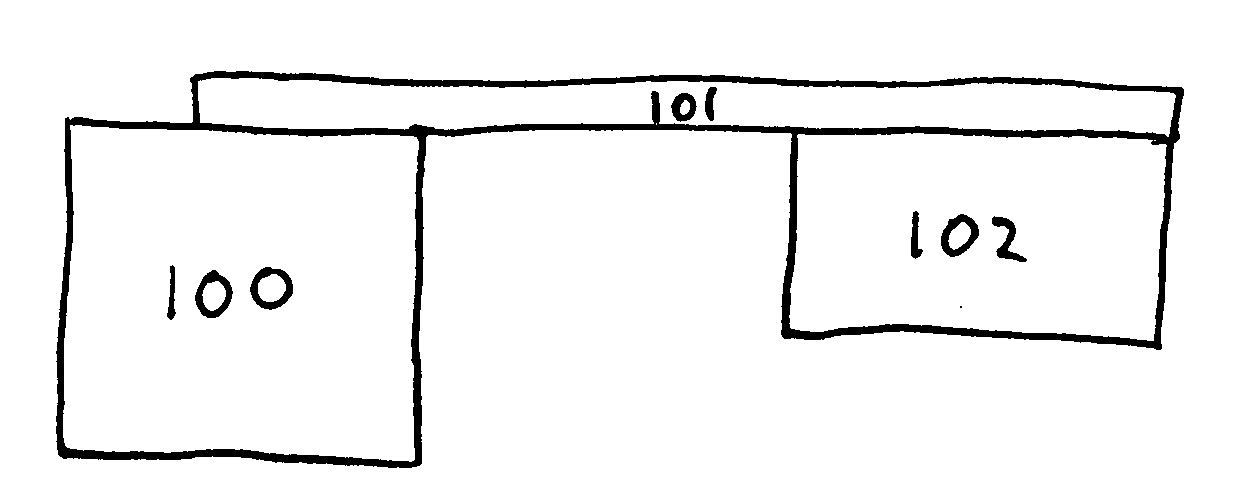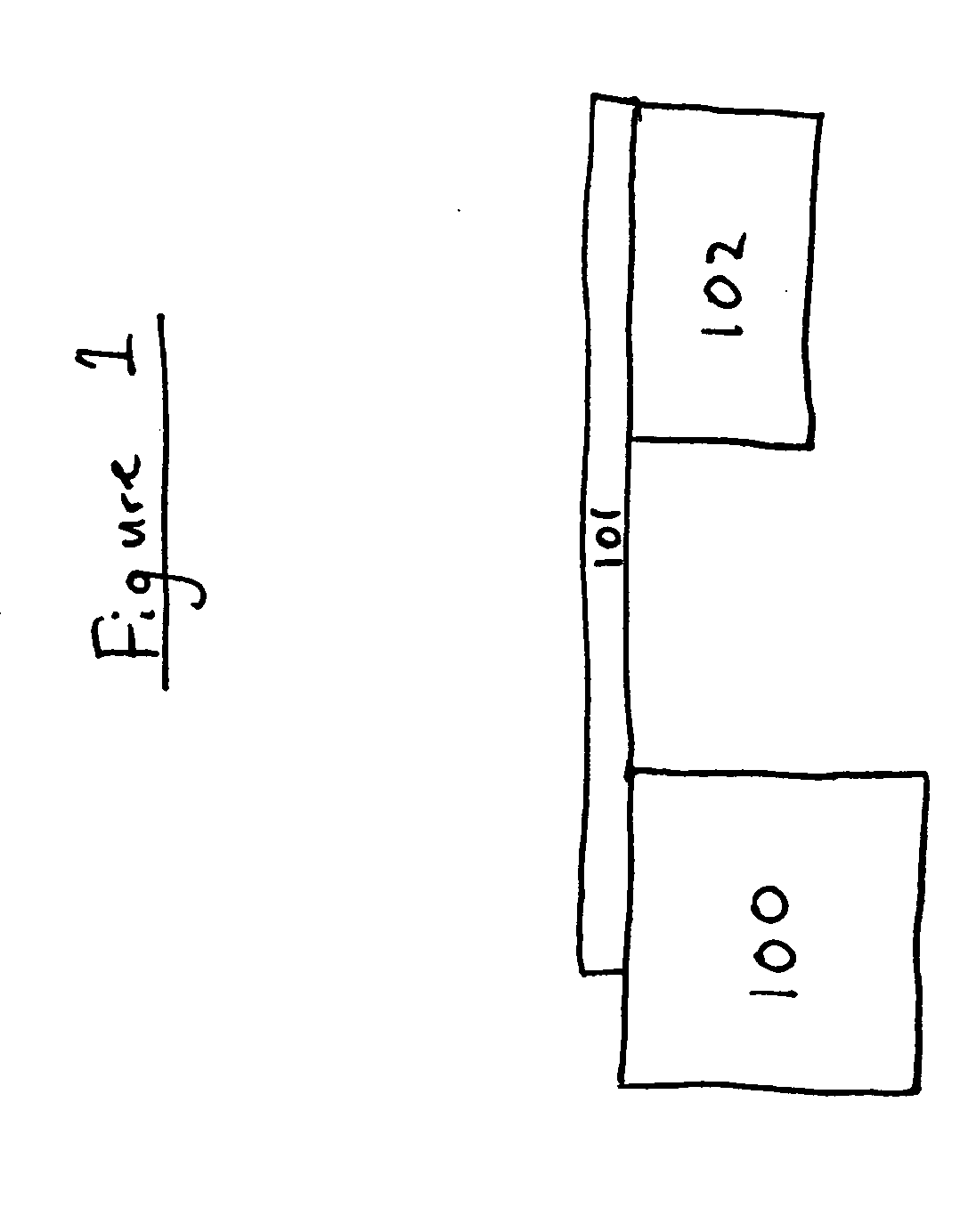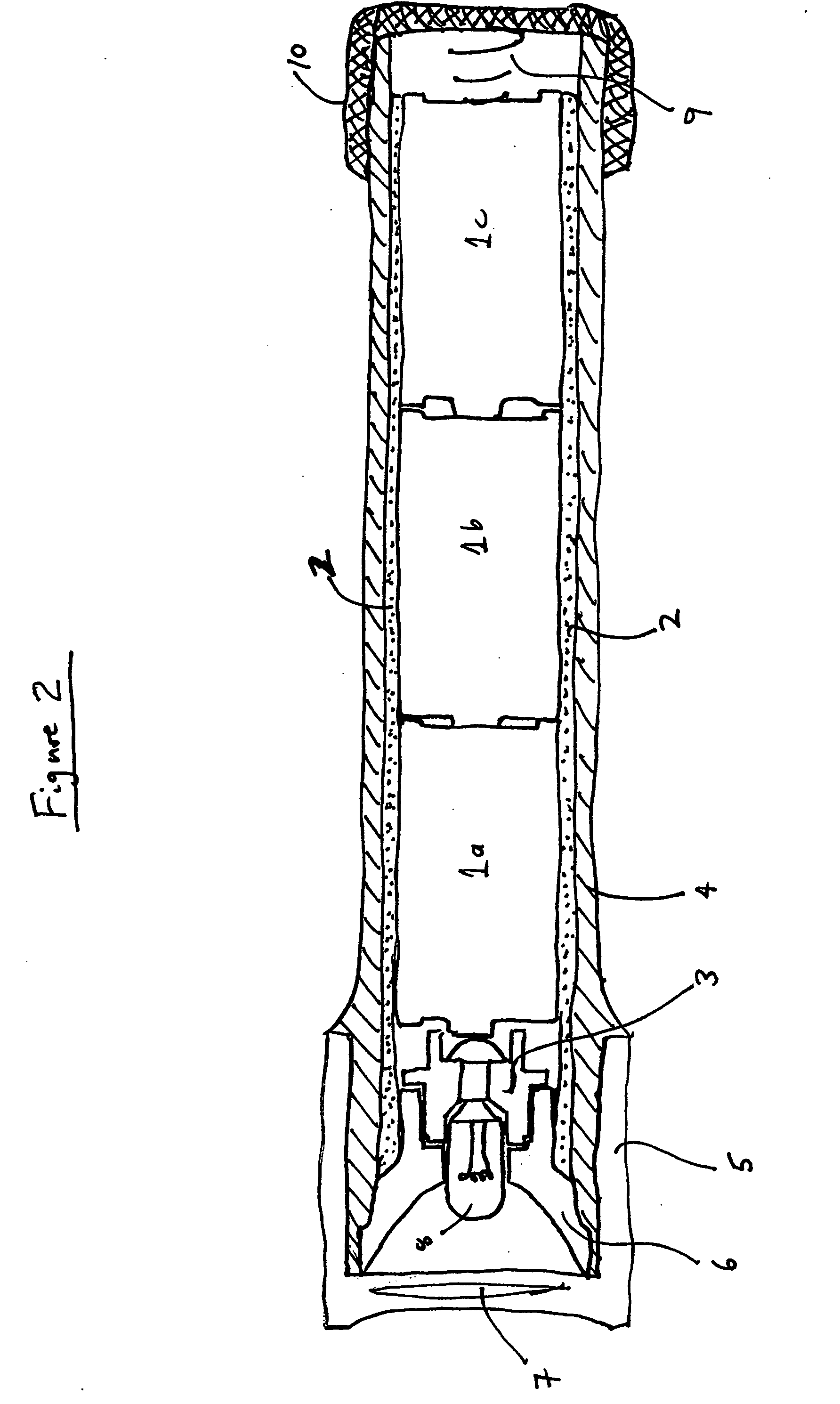Battery-powered devices
a battery-powered device and battery technology, applied in the field of battery-powered devices, can solve the problems of substantial heat generation, achieve the effects of extending battery life, improving the efficiency of an energy-consuming unit, and drawing waste hea
- Summary
- Abstract
- Description
- Claims
- Application Information
AI Technical Summary
Benefits of technology
Problems solved by technology
Method used
Image
Examples
Embodiment Construction
[0037] The present invention concerns battery-powered devices capable of transferring waste heat generated during the operation of an electrical component, i.e., an energy consumption unit (e.g., a light source, microprocessor, or hard drive) of the device, to the battery or batteries of the device's power supply. This transfer of waste heat is accomplished by including a heat conductor adapted to transfer heat from the energy consumption unit to the power supply, preferably to the batteries themselves. It has surprisingly been discovered that by so transferring waste heat, battery life can be extended, efficiency of energy consumption units can be enhanced, energy use can be optimized, etc. Such devices, and methods of making and using the same, are described in detail below.
1. Devices
[0038] The devices of the invention include at least one heat conduction circuit that comprises a battery-based power supply containing at least one battery, at least one energy consumption unit, a...
PUM
 Login to View More
Login to View More Abstract
Description
Claims
Application Information
 Login to View More
Login to View More - R&D
- Intellectual Property
- Life Sciences
- Materials
- Tech Scout
- Unparalleled Data Quality
- Higher Quality Content
- 60% Fewer Hallucinations
Browse by: Latest US Patents, China's latest patents, Technical Efficacy Thesaurus, Application Domain, Technology Topic, Popular Technical Reports.
© 2025 PatSnap. All rights reserved.Legal|Privacy policy|Modern Slavery Act Transparency Statement|Sitemap|About US| Contact US: help@patsnap.com



